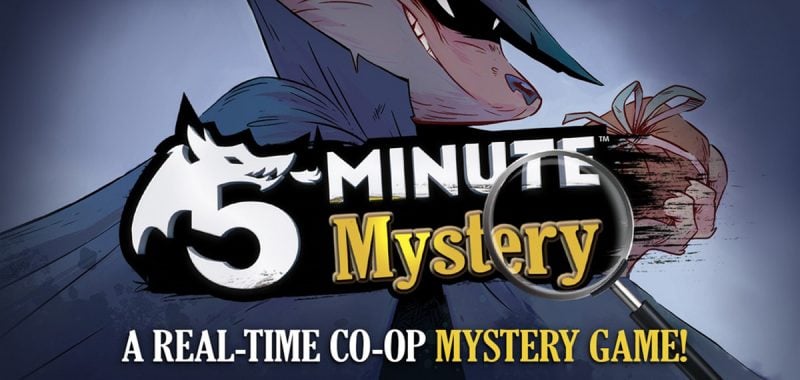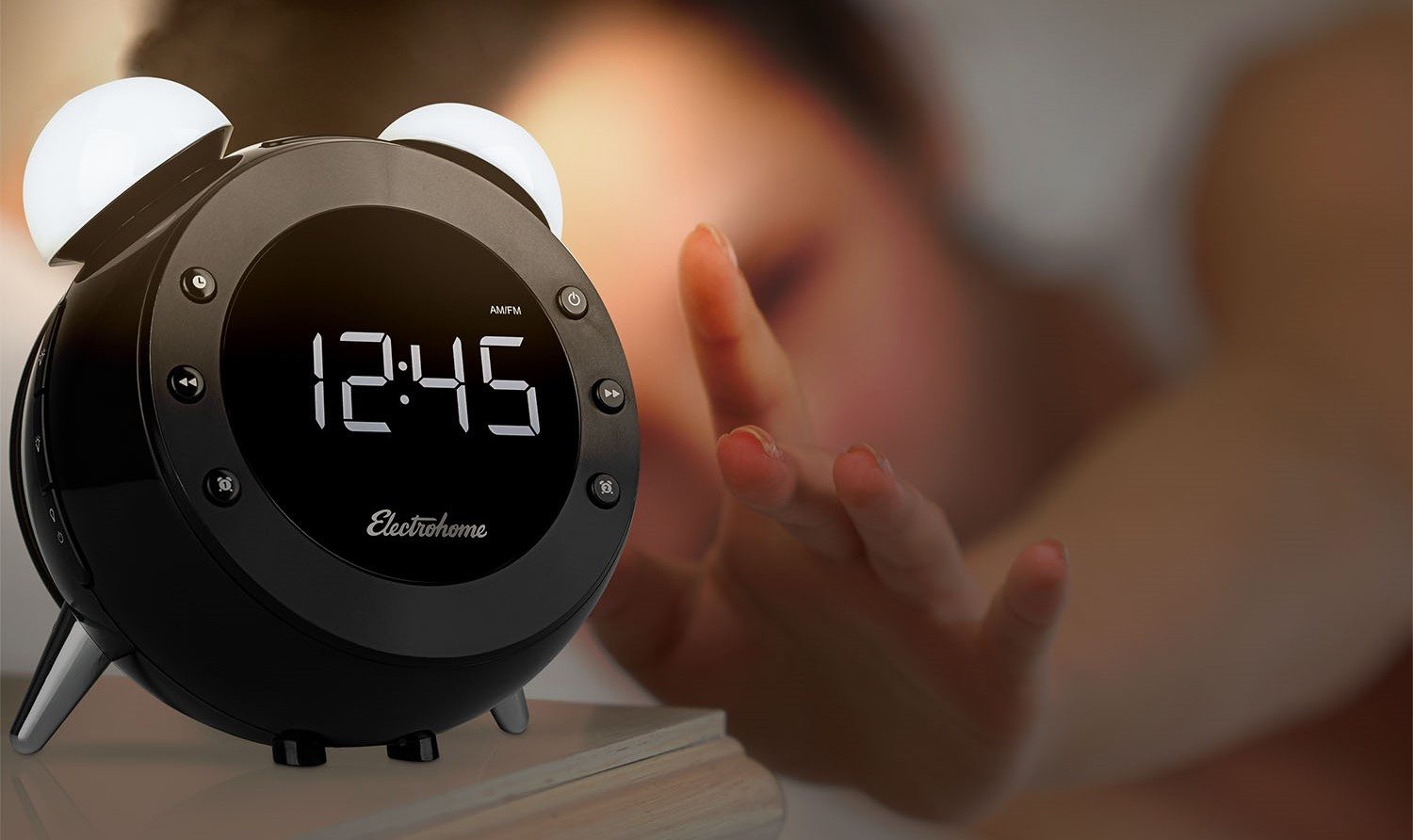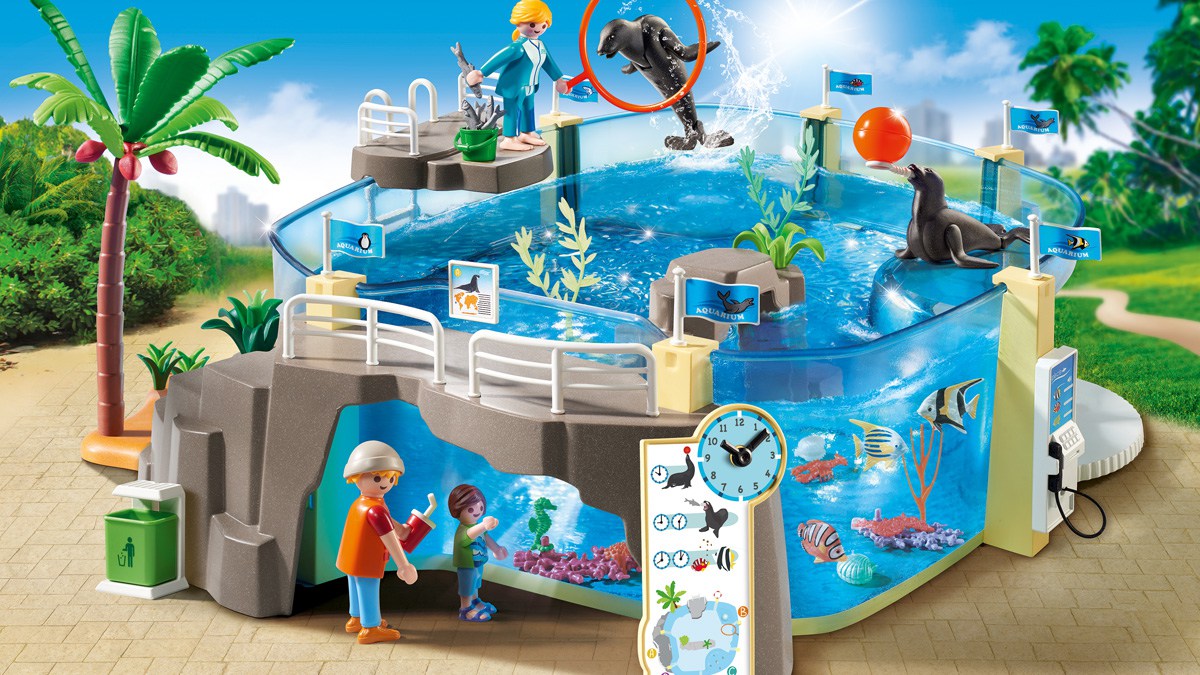The museum exhibit is set to open in 5 minutes, but somebody has stolen the MacGuffin? Work together to find the culprit before time runs out!
What Is 5-Minute Mystery: The Museum of Everything?
5-Minute Mystery: The Museum of Everything is a real-time cooperative game from Wiggles 3D for 1 to 4 players, ages 8 and up, and takes about (you guessed it!) 5 minutes to play. It’s currently seeking funding on Kickstarter, with a pledge level of $35 CAD (about $26 USD) for a copy of the game, or $45 CAD (about $39 USD) for the Mastermind edition, which will include more components. The game involves observation and light deduction, and can be played by even younger kids; it’s also easy to adjust the difficulty level simply by changing the amount of time allowed to solve a case. Although the game is designed for up to 4 players, you can squeeze in more players as long as everyone can see the scene card.
New to Kickstarter? Check out our crowdfunding primer.
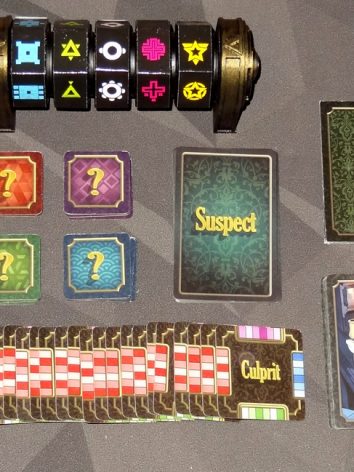
5-Minute Mystery: The Museum of Everything Components
Note: My review is based on a prototype copy, so it is subject to change and may not reflect final component quality. For instance, the codex in the prototype is 3D printed (and hand-stickered), but will likely be molded plastic in the final version. Also, the final game may include more scenes and case files than were included in the prototype.
Here’s what comes in the game:
- Codex
- 4 Reference cards
- 16 Clues (4 each in 4 colors)
- 20 Suspect cards
- 20 Culprit tiles
- 9 Case File cards
- 20 Scene cards

The components all look great, even in the prototype: the illustrations of the suspects and scenes are terrific, done in a cartoony style. But the most impressive component is, of course, the codex: a plastic cylinder with five rotating dials. Each dial has a particular symbol (square, triangle, circle, cross, star) in five different variations, along with one blank face.
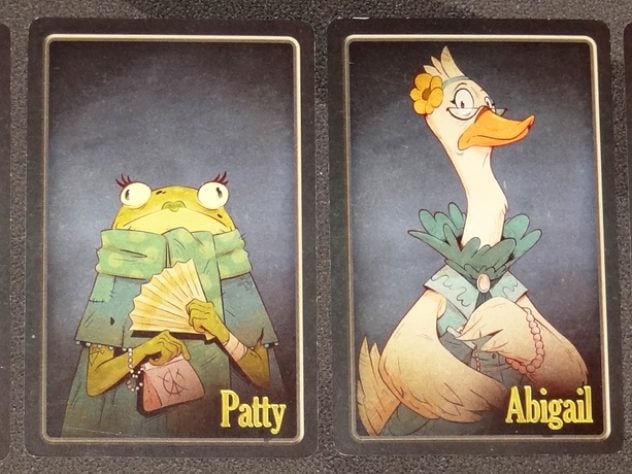
The suspects (represented both on the suspect cards and the culprit cards) look great: they’re all animals with various accessories, and all of them have guilty expressions on their faces.

The clue tiles are small square tiles that come in four different colors, and depict the various accessories seen on the suspect portraits. The purple clues are the animal’s exterior type: scales, feathers, skin, or fur. Each one also has color bars on one edge, used for matching against the culprit tiles, which also have one of each color along the edge.
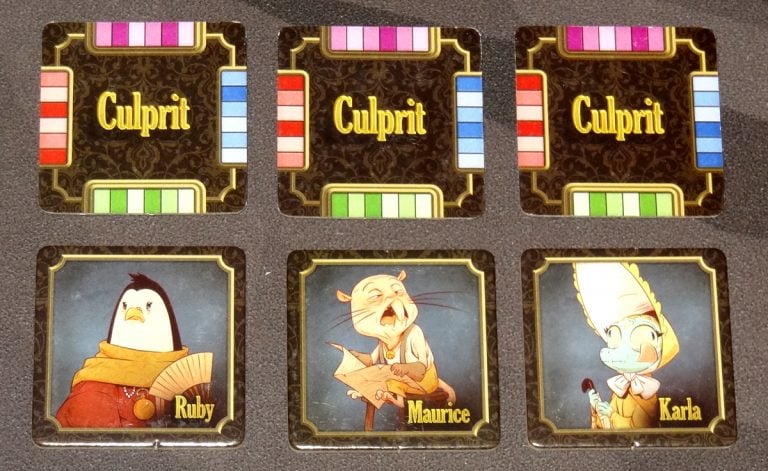
The clue tiles don’t have special indicators for color, but the orientation of the clues show how they should be matched against the four sides of the culprit tile, so I think it shouldn’t be too much of a barrier for color blind players.
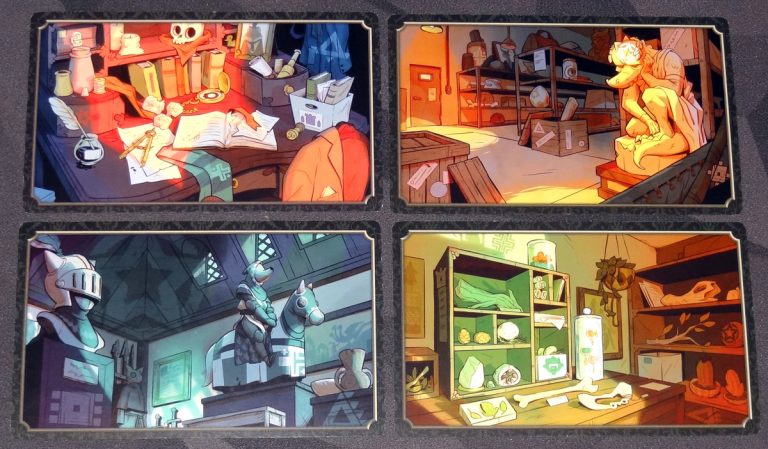
The scene cards are oversized cards with illustrations of various rooms in the museum. The illustrations are lovely, and each one has the five symbols hidden somewhere on the drawing. It’s worth noting that there are multiple copies of each illustration with different symbols, so you won’t end up memorizing a scene card and remembering which symbol variation is on each one. The backs of the scene cards show the correct symbols.
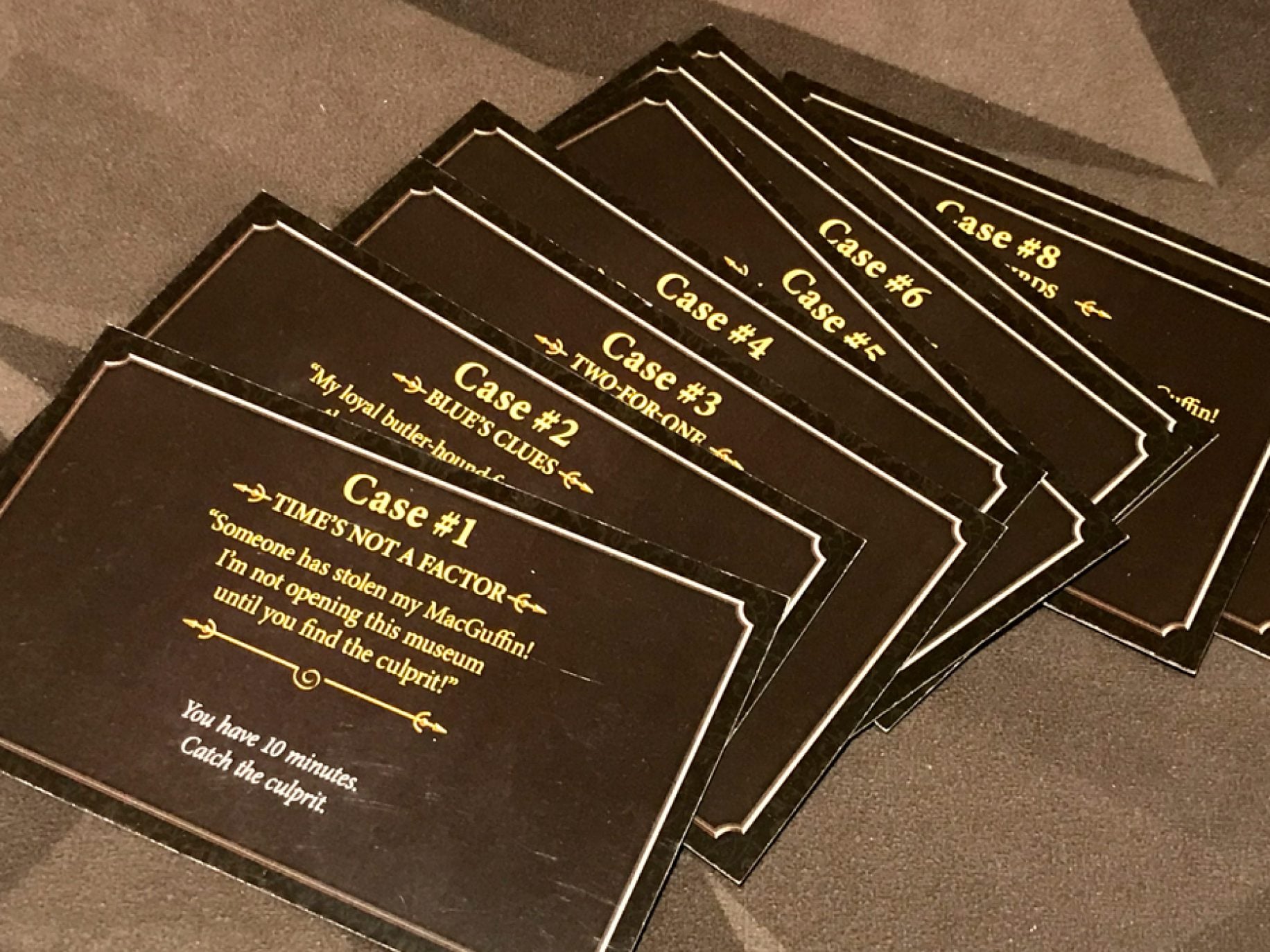
Finally, the case file cards provide increasingly difficult tweaks to the rules each time you play. Each case file has a name, some flavor text, and then special rules that affect the case. These cards aren’t particularly exciting to look at, but they get the job done.
How to Play 5-Minute Mystery: The Museum of Everything
5-Minute Mystery is really easy to learn: the draft rulebook was a single sheet of paper, and you won’t have to spend a long time figuring out how to play.
The Goal
The goal of the game is to catch the culprit before time runs out—though some of the case files modify the goal.

Setup
Shuffle the scene cards, and then place them in a stack face-up with the chosen case file card on top. (Be sure to check if the case file has special setup instructions.)
Shuffle the culprit tiles and randomly choose one, placing it in the center of the table face-down. Mix up the clue tiles and make four piles according to color.
Distribute the suspect cards to all the players.
Reset the codex so that the blank faces are all facing up (between the arrows on the end pieces). Players will take turns operating the codex, so give it to a random starting player.
Start a 5-minute timer!
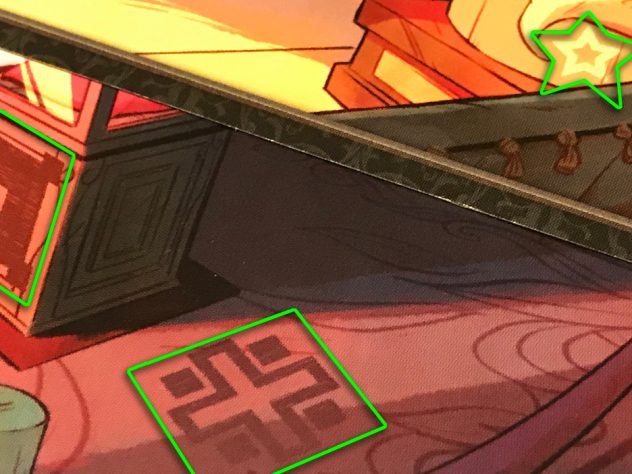
Gameplay
As soon as the timer starts, players reveal the first scene card and start looking for the five symbols, which the codex operator will select on the dials.
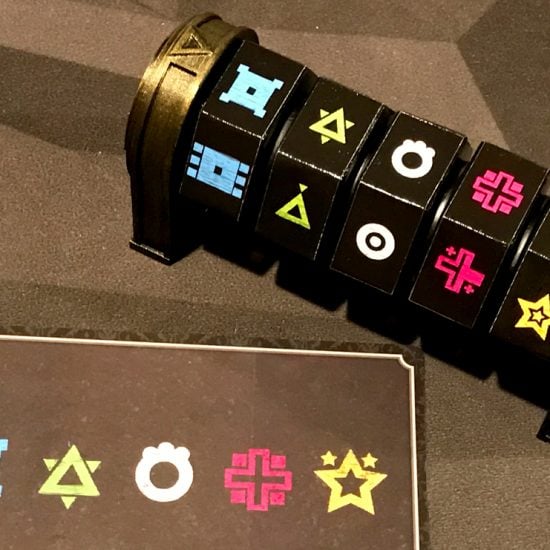
After all 5 symbols are dialed in, flip over the scene card and check if you’ve gotten everything correct. If so, continue to the next step. If not, reset the codex, pass it to the next player, and attempt the next scene card.
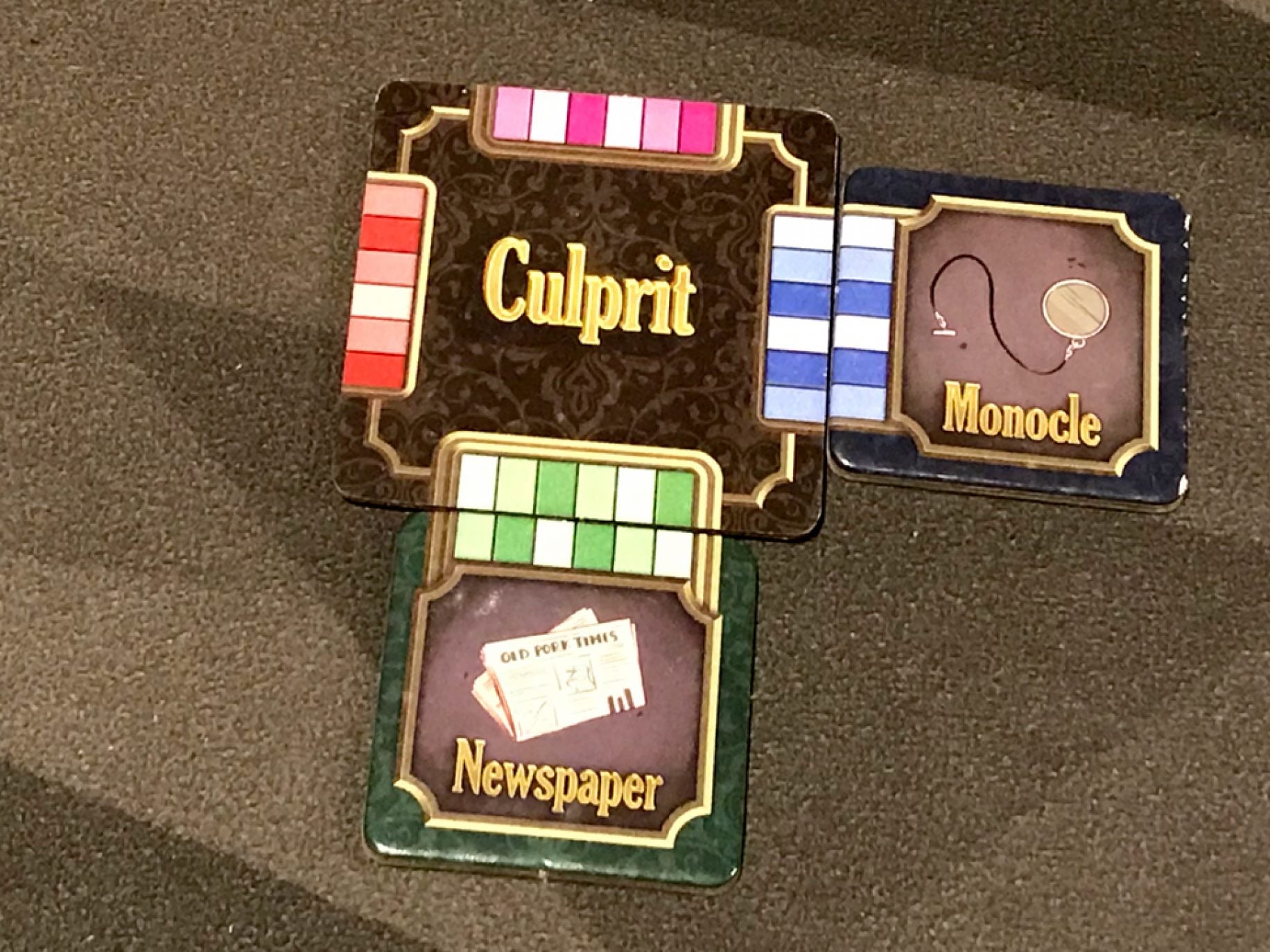
If you successfully complete a scene, you draw any clue tile and reveal it. Match up the color bars against the culprit tile. If they match, then the culprit has the feature shown; otherwise, they don’t have it. In the photo above, the culprit has a monocle, but not a newspaper (so you would set the newspaper tile aside after checking). All players can discard suspect cards based on the information from the clues.

You continue searching scenes and picking up clues, attempting to narrow it down to a single suspect.
Game End
If you think you’ve figured out the culprit or you run out of time, then you make a guess. Reveal the culprit and check to see if it matches your guess. If it does, you win! If not, then you’ve arrested the wrong suspect and you lose.
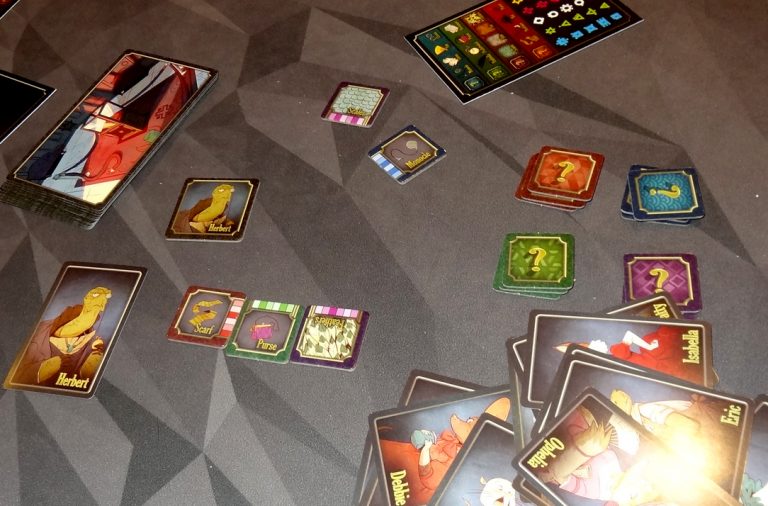
Case Files
The case files provide different scenarios to play to gradually increase the difficulty. Your first case file gives you 10 minutes; your second gives you 5 minutes but you start with the four blue clues. Later cases include catching two culprits simultaneously, and even trying to solve a case without talking!
Why You Should Play 5-Minute Mystery: The Museum of Everything
I’m a big fan of real-time games: I like the time pressure, the challenge of thinking and acting quickly, and the intensity of focus needed. But my kids and most of my gaming group don’t tend to like them—for the very same reasons. They’re too intense and stressful! In fact, whenever I mention that I have a real-time cooperative game to try out, I usually get a chorus of groans.
The one exception has been 5-Minute Dungeon (the predecessor to 5-Minute Mystery). For whatever reason, they all loved the frantic card-flinging, the humor in the various cards you encounter, the silly voices on the timer app. When we play 5-Minute Dungeon, we often play several bosses in a row. So 5-Minute Mystery wasn’t a tough sell for them and they were happy to give it a try.
First, I’ll mention that despite the fact that they’re both real-time games from the same publisher, these are very different games. In fact, those are probably the only things they have in common in terms of gameplay. Where 5-Minute Dungeon involved a lot of shouting and slapping down cards and a flurry of activity, 5-Minute Mystery is a bit more subdued, because it’s more about observation than action. Everyone is staring at the scene card, pointing out symbols and relaying that information to the codex operator, who is spinning dials to match.
When a clue is obtained, picking a tile and matching it up to the culprit doesn’t take a lot of motion. I suppose there is a little bit of card-flinging as suspects are eliminated, but it’s not quite as urgent, because there’s nothing preventing you from continuing to the next scene card while somebody is still sorting through their suspect cards. Even though there’s still the same time pressure to solve the case, it feels a little calmer overall than 5-Minute Dungeon.
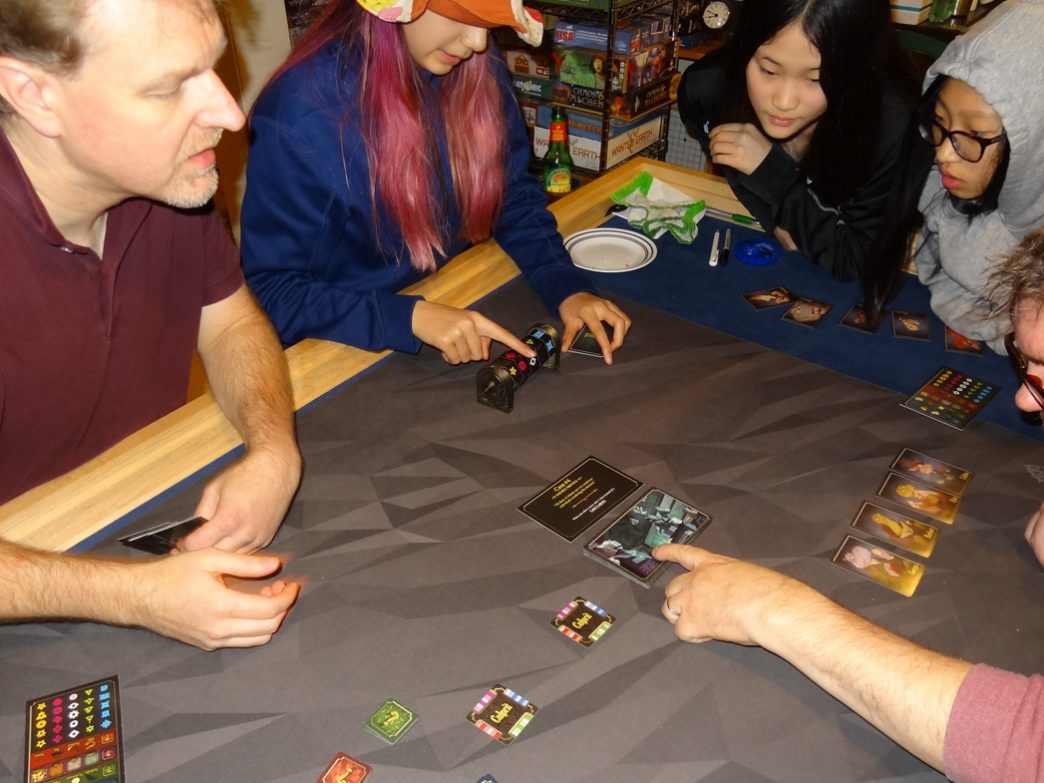
We’ve had a lot of fun with it. Hidden object games have been around for a long time, and I’ve played a lot of them—from the hidden pictures in Highlights Magazine to point-and-click computer games—and this has a similar feel, even though you’re only looking for symbols instead of objects. Some of them are easier to find than others; certainly it helps to have a pair of sharp eyes, and we found that the kids were typically a bit faster than the adults at this part.
I really like the clues and culprits, too: it reminds me of games like Guess Who? or the more recent Dinosaur Tea Party, where you use some light deduction and observation to whittle a list of suspects down to one based on their various accessories and features. At the beginning, it usually doesn’t matter which clue you take because you just need to get started somewhere. But as you play, you might find that some clue colors will be more useful in narrowing down your remaining suspects: the dilemma there is whether to spend a few more seconds deciding on a clue, or just grab the nearest one and go for speed rather than deliberation.
The case files add some fun wrinkles to the game, and we’ve had fun making our way through the variations. The finished game may end up with more than 9 (and the Mastermind edition certainly will), so I’m curious to see what else Wiggles 3D has in store. 5-Minute Mystery is a fun mash-up of a hidden-object game and Guess Who? packed into just five intense minutes of sleuthing—that is, if you can stop after only one case.
For more information or to make a pledge, visit the 5-Minute Mystery: The Museum of Everything Kickstarter page!
Click here to see all our tabletop game reviews.
![]() To subscribe to GeekDad’s tabletop gaming coverage, please copy this link and add it to your RSS reader.
To subscribe to GeekDad’s tabletop gaming coverage, please copy this link and add it to your RSS reader.
Disclosure: GeekDad received a copy of this game for review purposes.
